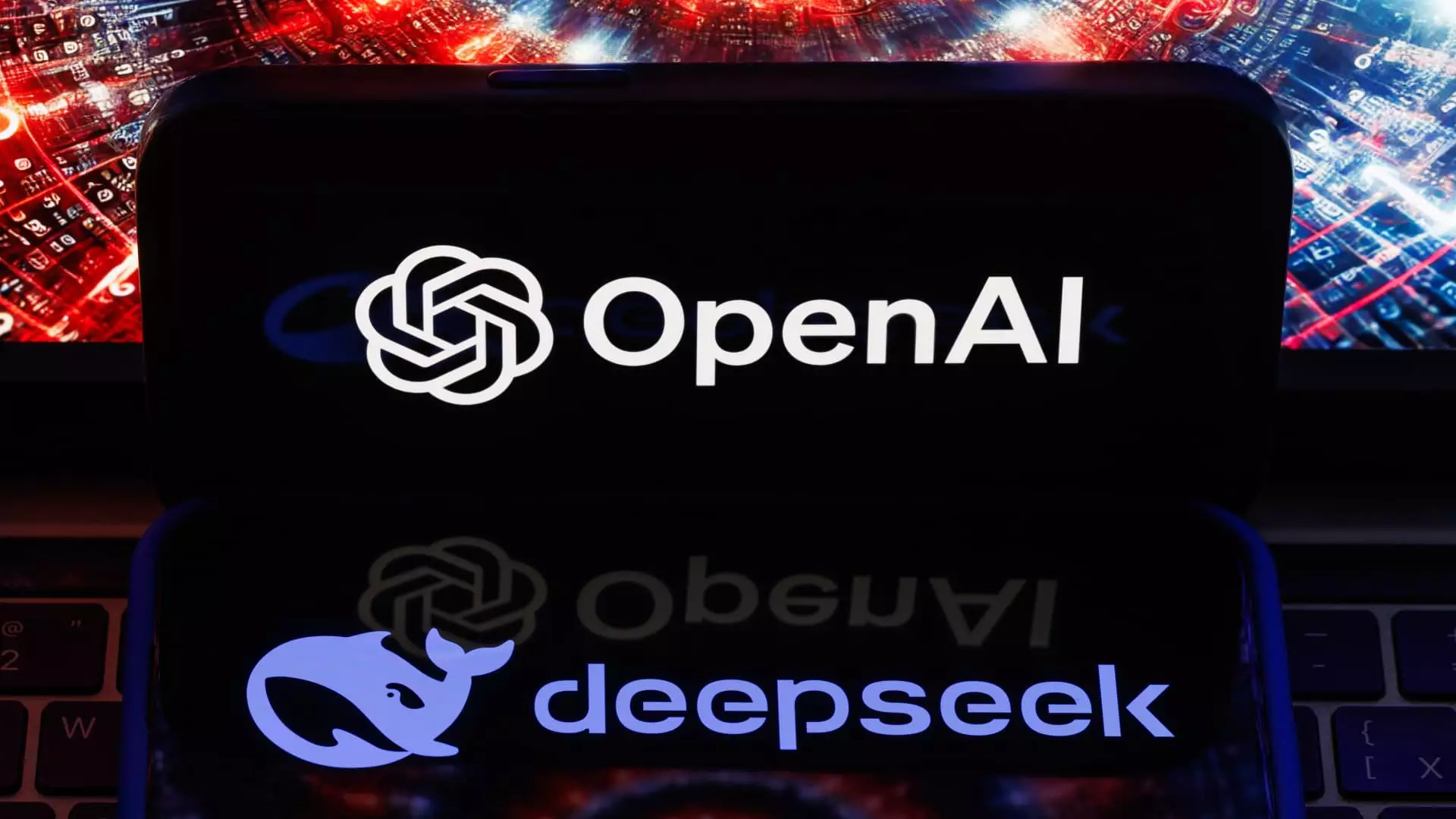As we continue to navigate the intricacies of global technological competition, recent developments from China’s AI lab DeepSeek have stirred up significant discussions among industry leaders. During France’s Artificial Intelligence Action Summit, prominent tech executives shared their perspectives on how DeepSeek’s advancements signify a shift in the landscape of artificial intelligence development, particularly in the context of U.S.-China relations. The leaders highlighted that the emergence of such competitive models from Chinese labs signals that China is a formidable player in AI innovation, contrary to previously held beliefs that they lagged behind the West.
A turning point occurred when DeepSeek unveiled its R1 model, boasting a remarkably low training cost of just $6 million. In an industry where giants like OpenAI and Anthropic invest billions, this revelation has had analysts reassessing the dynamics of AI development funding and resource allocation. Chris Lehane, OpenAI’s chief global affairs officer, articulated the stakes involved, suggesting that a clear dichotomy has formed: on one hand, democratic AI innovations from the U.S., and on the other, the authoritarian expansion of AI capabilities in China.
Though DeepSeek’s technological achievements are noteworthy, they come with their own set of ethical dilemmas. Critics have raised alarms regarding potential biases and censorship inherent within their AI model. Instances of the AI avoiding sensitive discussions, such as the infamous Tiananmen Square incident, point towards a cautious approach rooted in government-imposed restrictions. This highlights a broader concern regarding the moral implications of AI development and the extent to which these technologies reflect their originating cultures and political environments.
The existence of censorship ingrained in DeepSeek’s model further complicates the narrative of technological prowess. While advancements in efficiency and cost-effectiveness can be celebrated, the questions raised about ethical commitments to truth and transparency present challenges that the AI community must address. As technology continues to rapidly evolve, the intersection of AI capabilities and ethical practices becomes increasingly relevant in global discourse.
The advances made by DeepSeek serve to challenge the notion that the United States holds an unassailable position at the forefront of AI innovation. Reid Hoffman, co-founder of LinkedIn, was emphatic during the summit, stating that the competition is not only real but also intensifying. The narrative often painted of China’s technological shortcomings is facing a critical reevaluation, with signs indicating that the gap between U.S. and Chinese advancements has narrowed significantly.
Abishur Prakash of The Geopolitical Business emphasized the need for a recalibration in how Western countries perceive China’s technological trajectory. He articulated a new status quo where the idea of the U.S. as the undisputed leader in technological innovation is increasingly challenged. This development creates an imperative for the West to reassess its strategies, investments, and understanding of the geopolitical implications in the AI sector.
Despite the significant advancements heralded by DeepSeek, skepticism remains prevalent among industry experts, particularly concerning the credibility of the claims about their AI’s cost-efficiency. Evaluations from firmly established research firms have suggested that the actual expenditures related to DeepSeek’s technology far exceed their reported figures. Such discrepancies raise essential questions about the operational transparency and sustainability of the company moving forward.
Moreover, there are concerns about the methodology employed by DeepSeek in achieving its performance metrics. Some suggest that DeepSeek may have relied on data extraction techniques known as “distillation,” possibly drawing upon outputs from larger U.S. AI systems. If true, this would imply that DeepSeek’s model’s capabilities might not solely derive from its own innovations but rather from leveraging existing technologies developed by competitors.
While deep insights into DeepSeek’s advancements paint a vibrant picture of competition, many AI developers believe that existing paradigms continue to favor larger, more resource-intensive models. Meredith Whitaker from the Signal Foundation cautioned against overestimating the impact of DeepSeek on the broader AI landscape, reiterating that momentum remains heavily tilted toward established players.
As the race for AI supremacy unfolds, it is clear that understanding the nuances of technological developments is crucial. Industry leaders will need to keep their finger on the pulse of not only technological advancements but also the accompanying ethical, financial, and geopolitical implications. The competition between the U.S. and China is marked by its complexity, and only time will reveal the ultimate outcomes of this significant chapter in the evolution of artificial intelligence.

